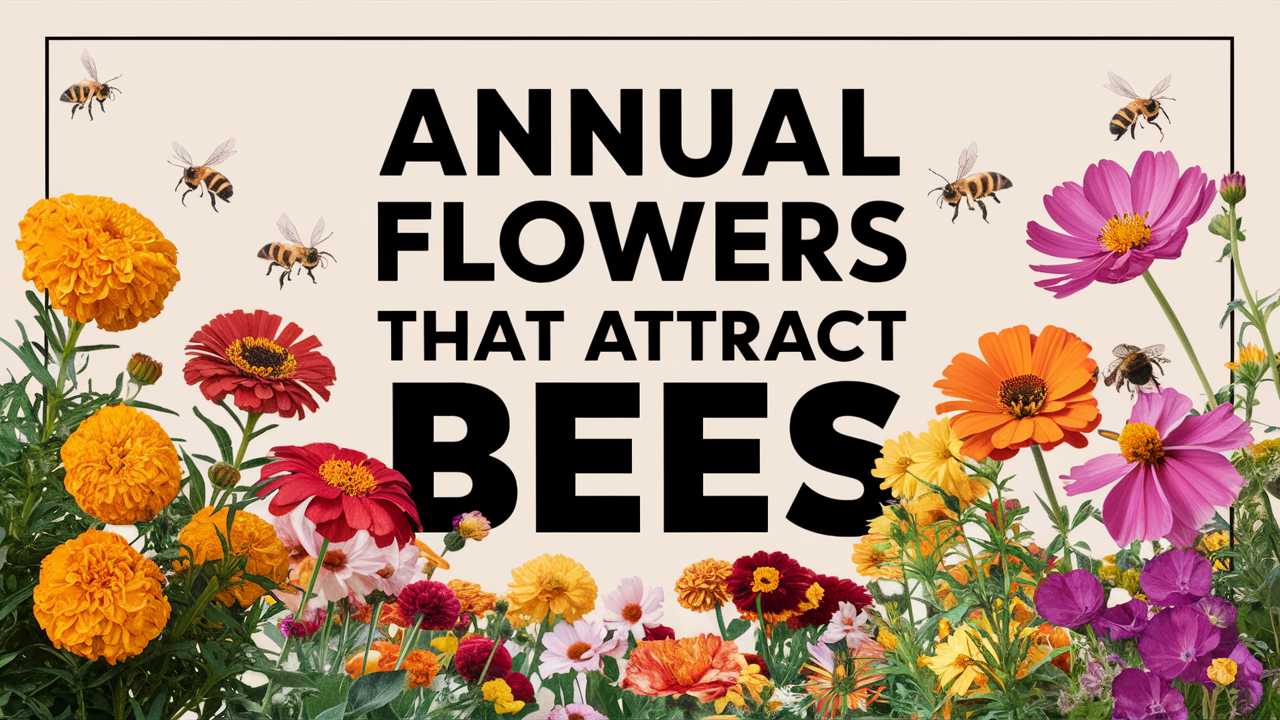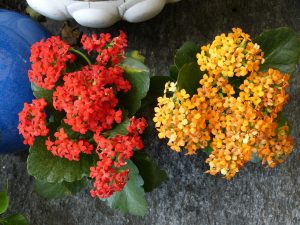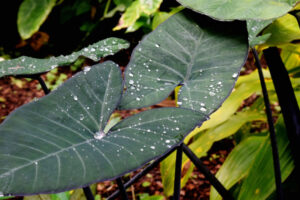In this guide, we’ll explore several annual flowers that not only enhance your garden but also provide a feast for bees, focusing on how each flower attracts these essential pollinators.
Sunflower (Helianthus annuus)

Sunflowers are a staple in every pollinator’s dream garden, and their iconic large yellow heads serve multiple purposes in attracting bees. The vast, open flower heads allow bees to access the nectar easily, while the numerous small florets that make up the sunflower head offer a bounty of pollen. Sunflowers are especially appealing to honeybees due to their high nectar content. The flowers bloom sequentially, ensuring that there is food available for bees throughout the summer and into early fall. Furthermore, the sight of sunflowers swaying in the breeze not only draws in bees but also catches the eye of butterfly enthusiasts, enhancing the biodiversity of your garden.
Zinnia (Zinnia elegans)
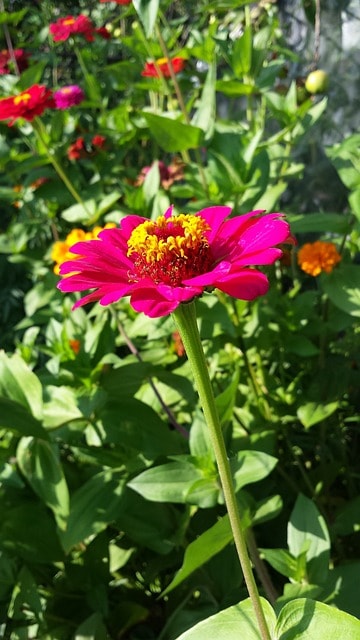
Zinnias are celebrated for their bright, colorful blooms and sturdy structure, making them particularly attractive to bees. The flat, open shape of zinnia flowers allows bees to land comfortably, and their abundance of nectar serves as a potent lure. The diverse color spectrum—from fiery reds to soft pastels—acts like a beacon, guiding pollinators from a distance. Zinnias are prolific bloomers, producing flowers from late spring until the first frost, which means they can continually provide nourishment to bees during the height of summer, ensuring a steady supply of food. A diverse planting of zinnias can create a miniature haven for bees, encouraging them to visit frequently.
Cosmos (Cosmos bipinnatus)

Cosmos are enchanting annuals that captivate bees with their simple charm. Their feathery foliage and open flower structure create an inviting landing pad for bees. The diverse colors, including shades of pink, white, and orange, enhance visual appeal and invite pollinators from near and far. Cosmos flowers are rich in nectar, making them a favorite among various bee species. Their adaptability to different soil types and ability to thrive in less-than-perfect conditions make them an excellent choice for pollinator gardens. Additionally, cosmos bloom for several months, providing a reliable food source that encourages bees to linger and forage repeatedly.
Marigold (Tagetes spp.)
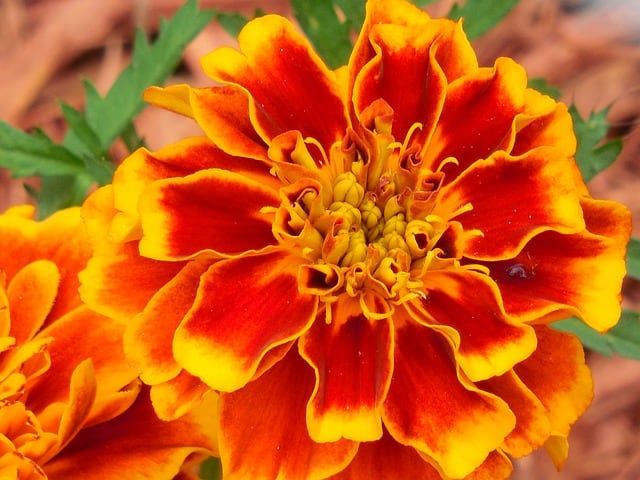
Marigolds, with their distinctive layers of vibrant petals and rich hues, are not just decorative; they also play a vital role in attracting bees. The disk-shaped flowers are rich in both nectar and pollen, which appeals to a wide variety of bees, especially honeybees. Despite their robust appearance, marigolds are surprisingly delicate in the way they foster pollination: the strong scent acts as a natural attractant. When planted in groups, marigolds create a vivid palette that beckons bees. Moreover, their long blooming period, from early summer until frost, ensures that your garden remains a continuous source of food throughout the growing season.
Borage (Borago officinalis)
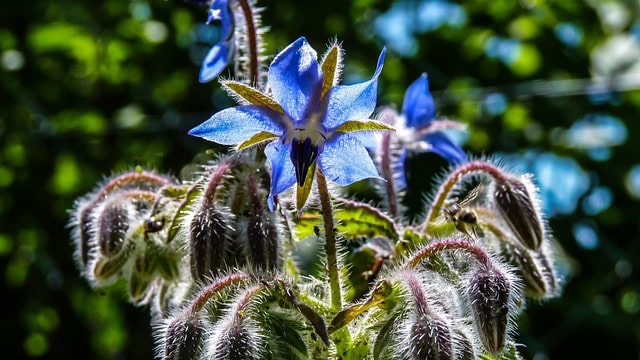
Borage is a unique herb with star-shaped, vibrant blue flowers that are almost irresistible to bees. The flowers produce an abundance of nectar, attracting not only honeybees but also bumblebees and solitary species. Borage is particularly appealing because it blooms repeatedly throughout the season; when bee populations are high, you can often see them buzzing around the plant’s flowers. Furthermore, borage flowers can be a source of food for bees at a time when not many other blooms are available. The plant itself is known for its resilience, thriving in poor soil, which makes it a practical choice for any pollinator-friendly garden.
Calendula (Calendula officinalis)
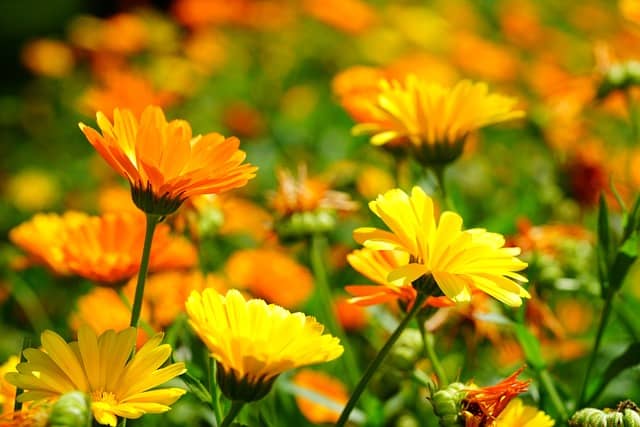
Calendula adds a splash of bright yellow and orange to the garden while serving bees with its nectar-rich flowers. Its blooms open up wide, exposing the attractive center, which is rich in pollen. Because these flowers are accessible, they attract a variety of bees seeking a quick and easy food source. Calendula has a long flowering period, often blooming from early spring to the first frost, providing a reliable nectar and pollen source for bees during both the peak and tail ends of the growing season. Moreover, its medicinal properties make it an excellent dual-purpose plant, enhancing both your garden’s beauty and functionality while supporting pollinator health.
Cleome (Cleome hassleriana)
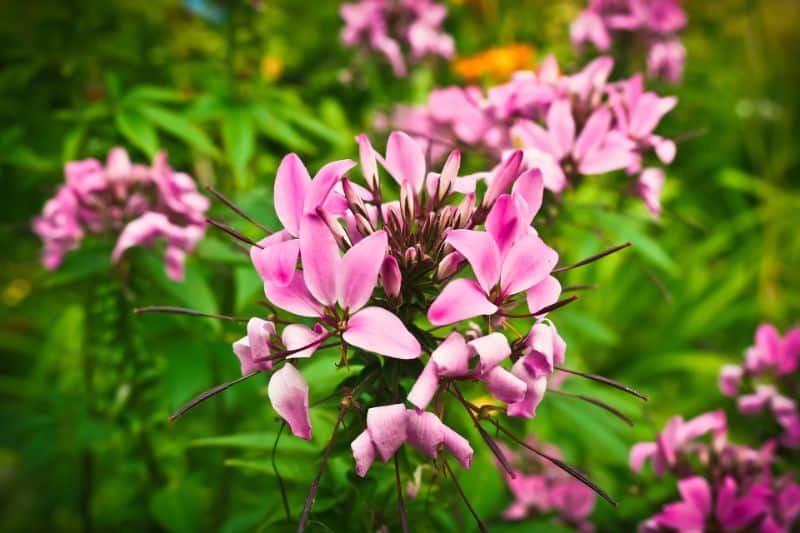
Cleome, often referred to as the spider flower, offers unique blooms that are both tall and airy. The flower structure presents easy access to nectar, making it attractive to a wide variety of bees. Its tall stems and clusters of individual flowers allow bees to maneuver easily and forage comfortably. The fragrance of cleome is another factor that draws in bees, enhancing the ambient experience of your garden. Blooming from late spring to fall, cleome ensures that bees have access to essential food throughout the growing season. Their showy presence also serves to educate visitors about the importance of pollinators, inviting all to appreciate their role in our ecosystem.
Nasturtium (Tropaeolum majus)
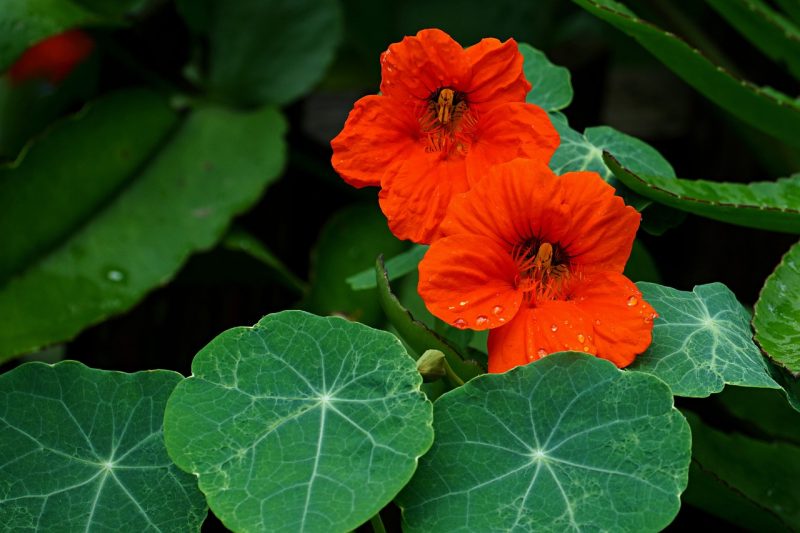
Nasturtiums are not only beautiful to look at but are also incredibly appealing to bees. The vibrant flowers with their unique shapes rest atop lush green leaves, allowing bees ample landing space for their foraging activities. The petals of nasturtiums are easy for bees to access, and the nectar is plentiful, making them an excellent source of food. One unique aspect of nasturtiums is that they thrive in poor soils, allowing you to maximize your garden’s potential without heavy amendments. Beyond just attracting bees, nasturtiums offer culinary uses, allowing both gardeners and pollinators to benefit from their fragrant blooms.
Sweet Alyssum (Lobularia maritima)

Sweet alyssum is a low-growing, fragrant annual that produces stunning clusters of small flowers. Its rich nectar supply is particularly attractive to smaller bee species, including native pollinators that may be overlooked. The flowers provide a reliable source of nectar and bloom profusely from spring until frost. The sweet scent and compact growth habit make sweet alyssum perfect for filling in garden edges, containers, or even pathways. By creating dense patches of sweet alyssum, you can ensure a tight-knit feeding ground for bees, enhancing the overall biodiversity of your garden.
Salvia (Salvia splendens)
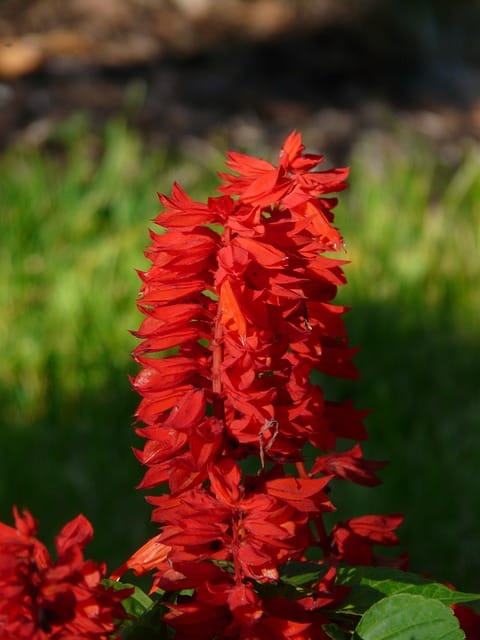
Salvia is available in various types, each offering tubular flowers that are highly attractive to bees. The structure of salvia flowers is ideal for bee foraging, as the tubular form requires bees to extract nectar while inadvertently transferring pollen. The vibrant colors of salvia—ranging from deep blues to bright reds—act as visual cues for bees, drawing them in from a distance. By planting different varieties that bloom at different times, you can maintain a continuous food source for bees throughout the flowering season. Salvia also tends to thrive with little maintenance, making it an excellent choice for both novice and experienced gardeners looking to attract pollinators.
Tithonia (Tithonia rotundifolia)
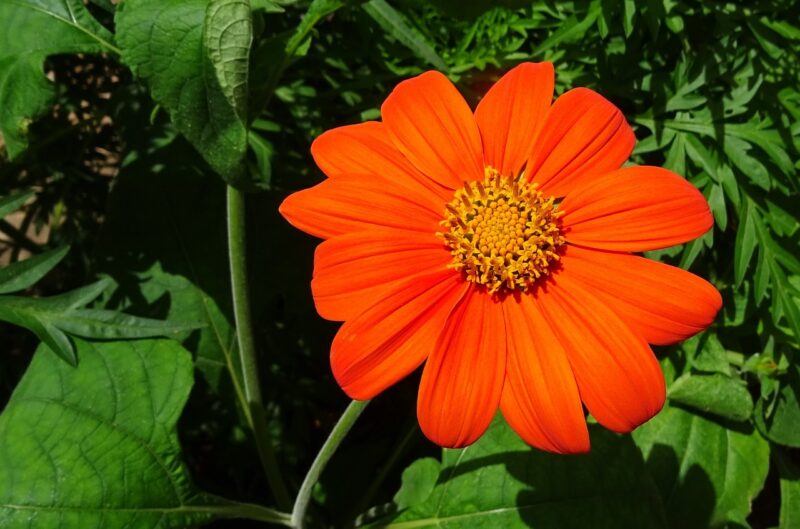
Tithonia, commonly known as the Mexican sunflower, is a showstopper in the garden with its bold, orange-red blooms that can be seen from afar. This flower is particularly inviting to bees because it produces copious amounts of nectar and pollen. The flat, open structure of the blooms allows bees of all sizes to easily land and forage. Tithonia thrives in sunny conditions and can withstand poor soil, making it an excellent option for environmentally conscious gardeners. Its long blooming season ensures that bees have access to food when many other flowers are fading. Additionally, tithonia is known for attracting butterflies, thereby enriching the diversity of your garden.
Lobelia (Lobelia erinus)
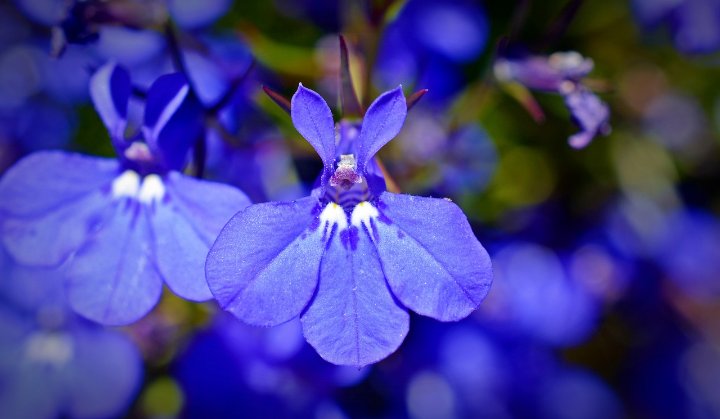
Lobelia’s delicate appearance belies its effectiveness as a bee attractant. With its sprawling habit and a charming mix of blue, purple, and white blooms, this annual offers a beautiful display while inviting a range of pollinators. The tubular flowers are specifically shaped to accommodate bees, making it easy for them to extract nectar. Planting lobelia in hanging baskets or containers can create a cascading effect that enhances visual interest while keeping bee populations well-fed. Its preference for cooler weather means lobelia can extend the bloom period into early spring and fall, serving as a valuable food source when other flowers have yet to appear or have faded.
Petunia (Petunia spp.)
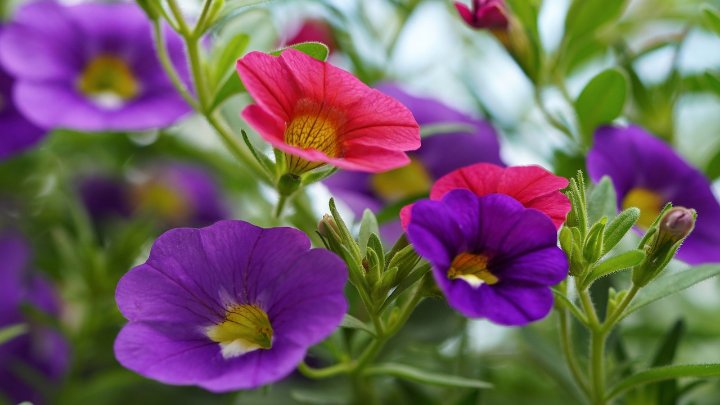
Petunias are loved not only for their stunning display of colors but also for their ability to attract bees. Their trumpet-shaped flowers are rich in nectar, which beckons bees as they search for food. The wide variety of petunia cultivars ensures options for every gardener, and their continual blooming period sustains bees throughout the growing season. Petunias thrive in full sun and well-draining soil, making them easy to care for. Regular deadheading encourages more blooms, providing bees with reliable access to nourishment. As garden favorites, petunias offer not only a delightful fragrance but also the chance to support local bee populations.
Snapdragons (Antirrhinum majus)
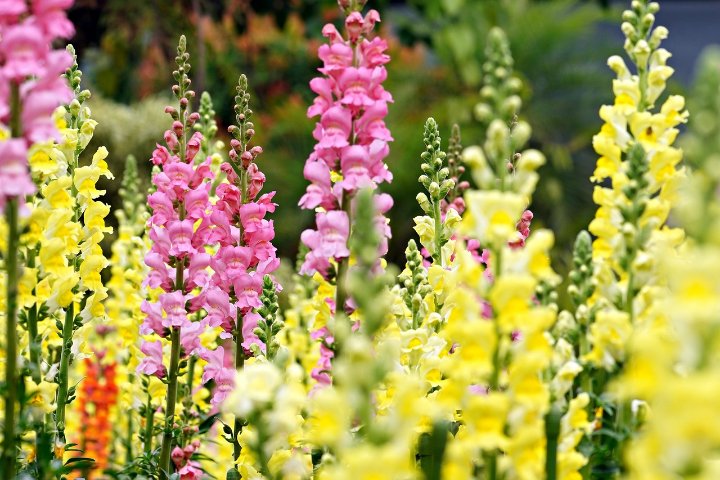
Snapdragons bring whimsical charm to gardens with their unique flowers that snap open and closed when squeezed, creating an interesting interaction for bees. The tubular shape of the flowers is perfect for bees seeking nectar; they must work harder to get to it, which increases the pollination process. Available in a rainbow of colors, snapdragons bloom from early spring through summer, providing ample opportunities for foraging. They thrive in cooler conditions, making them one of the first blooms of the season and a critical food source for early-season bees emerging from winter dormancy. Snapdragons can also attract butterflies, enriching the spectrum of pollinators attracted to your garden.
Verbena (Verbena spp.)
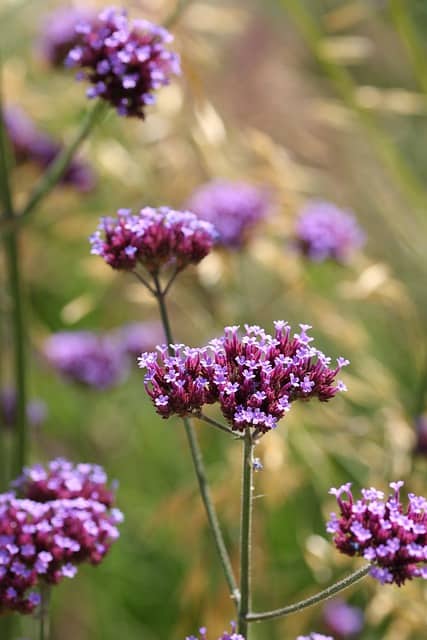
Verbena is a drought-tolerant annual that produces clusters of small flowers in vibrant colors, which are incredibly attractive to bees. The open flower arrangement allows easy access for bees while supporting a continuous nectar supply. Additionally, verbena’s extended blooming period—from late spring to frost—makes it a reliable resource for pollinators. The strong fragrance of verbena also entices bees as they identify the flowers from a distance. Whether planted in pots, hanging baskets, or as a ground cover, verbena enhances any garden design while providing bees with the nourishment they seek.
Ageratum (Ageratum houstonianum)

Ageratum, known for its fluffy clusters of purple or blue flowers, provides a feast for bees. The small flowerheads are rich in nectar, attracting various pollinators. Ageratum has a prolonged blooming period, ensuring a reliable food source throughout the summer months. Additionally, its preference for sunny spots and ability to thrive in various soil conditions make it easy to grow. Ageratum’s compact growth habit fits well into borders or containers, allowing you to create a low-maintenance garden that actively supports bee populations.
Clarkia (Clarkia amoena)
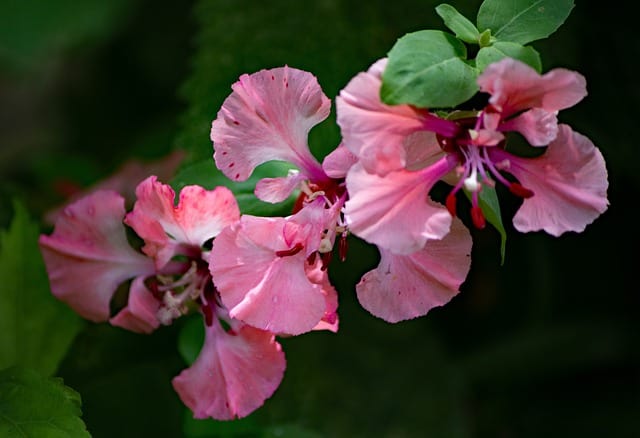
Clarkia, commonly referred to as mountain garland or godetia, features cup-shaped flowers that exhibit a lovely array of colors. The blossoms open wide, providing ample access for bees searching for nectar. Known for their resilience and ability to thrive in varied conditions, Clarkia blooms from late spring into summer, ensuring that there is plenty of food for bees during this peak season. This annual is often used to fill mixed beds or borders, where its unique flower structure and vibrant colors can stand out while promoting pollination in the garden.
Phacelia (Phacelia tanacetifolia)

Phacelia is an exceptional green manure crop that produces a profusion of beautiful blooms attracting bees. The flowers have a unique curled shape, which makes them visually striking while also easy for bees to access. Known for its fast growth and ability to improve soil health, phacelia blooms in early to late summer, during which time its nectar-rich blossoms serve as a magnet for bees. Planting phacelia not only helps sustain pollinator populations but also brings aesthetic beauty to your garden while benefitting the environment.
Linaria (Linaria maroccana)
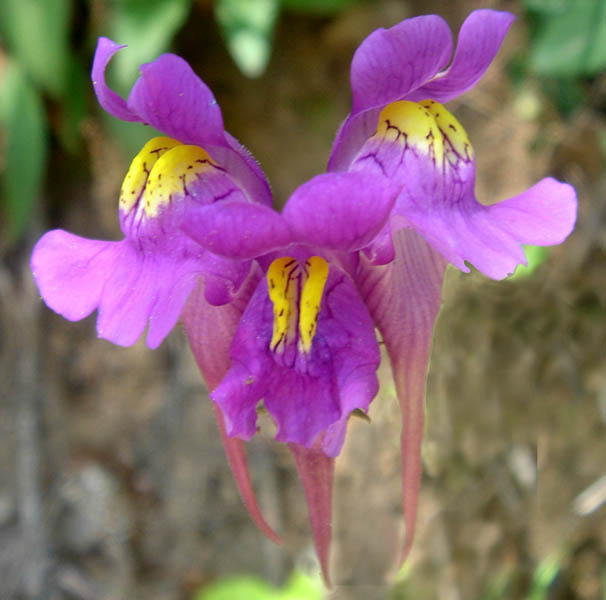
Linaria, or toadflax, enchants with its tall spikes of delicate blooms that range in color from soft yellow to deep purple. The tubular flower shape is tailored to accommodate bees, allowing them to reach the nectar while navigating through the petals. When established, linaria can bloom from late spring until frost, ensuring a consistent supply of food for bees. This annual thrives in well-drained soil and sunny locations, making it a fantastic addition to both flower beds and borders, all while enriching the local bee ecosystem.
Ammi Majus (False Queen Anne’s Lace)
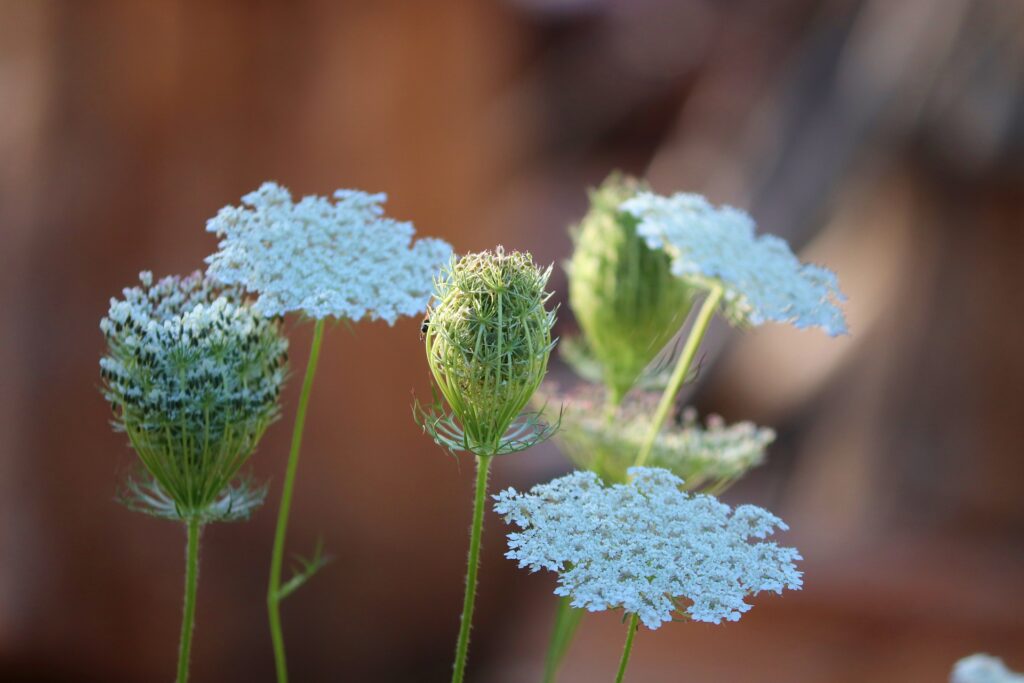
Ammi majus features delicate white flowers that resemble lacework, making it an elegant choice for a pollinator garden. Its flat cluster of blooms provides ample landing space for bees, making foraging efficient and enjoyable. As a member of the carrot family, ammi majus attracts bees with its nectar-rich blossoms, thriving in full sun and well-drained soil. By planting this flower, you create a sophisticated habitat that supports bee populations while promoting a stunning garden display.
Scarlet Runner Bean (Phaseolus coccineus)

The scarlet runner bean combines functionality and aesthetics in a stunning way. Its striking red flowers are rich in nectar, making them particularly attractive to bees throughout the warm months. The climbing nature of this plant allows it to create vertical interest, draping over fences or trellises while inviting buzzing pollinators to enjoy its blossoms. Growing scarlet runner beans not only provides a delicious crop but also enhances biodiversity, encouraging bees to pollinate nearby garden plants, including fruits and vegetables.
Black-eyed Susan (Rudbeckia hirta – annual variety)
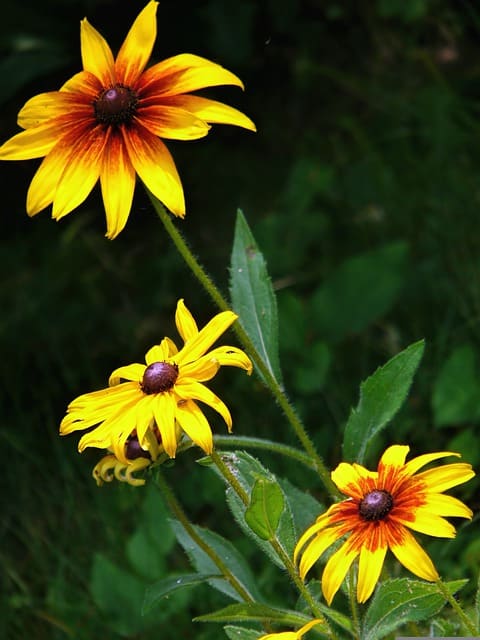
Black-eyed Susans shine like beacons in the garden with their bright yellow petals and dark centers. These flowers are known for their abundance of pollen, which attracts bees all summer long. The open disk-shaped flowers create ample space for bees to land comfortably, enhancing foraging efficiency. Their long blooming period, which spans from late spring to early fall, ensures that bees are continually supported with sustenance. Black-eyed Susans are also adaptable and can tolerate a wide range of soil types, making them an easily manageable choice for bustling bee populations.
Godetia (Clarkia amoena)

Godetia provides a colorful spectacle with its delicate, cup-shaped flowers. The vivid array of colors, ranging from soft pastels to vibrant shades, makes them visually striking and inviting to bees. The open structure of the blooms allows for easy access to nectar, encouraging bees to visit frequently. Naturally, this plant thrives in various garden locations, making it versatile for designs that aim to support pollinator habitats. By incorporating godetia into your landscape, you ensure that bees have a reliable and appealing source of food during their foraging visits.
Nemophila (Baby Blue Eyes)
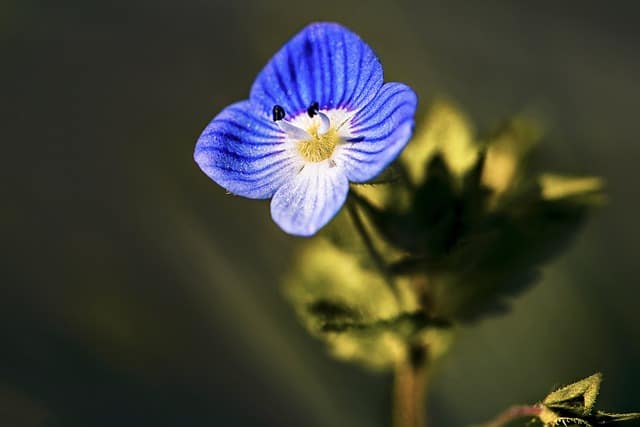
Nemophila, also known as baby blue eyes, brings a delightful burst of soft blue to gardens. The small, cup-shaped flowers are particularly appealing to bees in search of nectar. Their blooms thrive in cooler weather, making them resilient and able to serve as a food source when many other flowers are unavailable. Easy to grow, nemophila creates an enchanting carpet of color, enhancing the beauty of your garden while supporting local bee populations. Their peek-a-boo presence will entice both bees and gardeners alike, making this flower a whimsical addition to your bee-friendly space.
Coreopsis (Coreopsis tinctoria – annual)
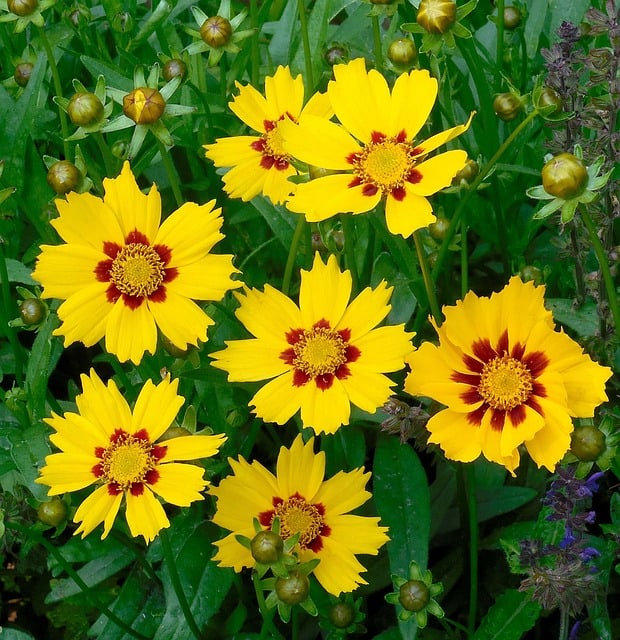
Coreopsis is often referred to as tickseed, with its cheerful yellow and red flowers that create a sense of joy. These blooms are particularly loved by bees, offering ample nectar and pollen. Their daisy-like appearance and open structure make them easy for bees to land on, encouraging more frequent visits. Coreopsis thrives in full sun and tolerates poor soil conditions, making them low-maintenance in gardens. With a flowering period that can extend well into the autumn months, coreopsis ensures that bee populations are continually fed and supported as they forage energetically through your garden.
Larkspur (Delphinium consolida)
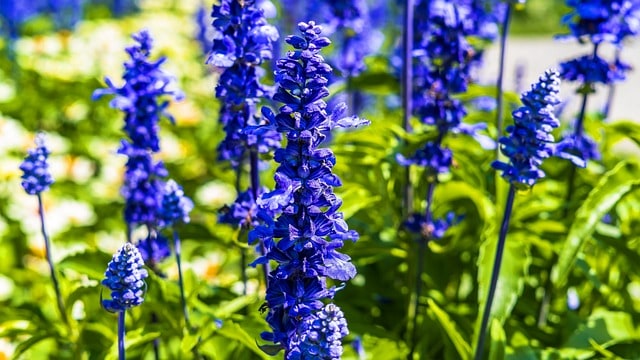
Larkspur is a showstopper in any garden, with its tall, spiky flowers available in blue, white, and pink shades. The flower’s structure is particularly advantageous for bees, as it offers both a comfortable landing site and a rich source of nectar. Bees are drawn to larkspur’s vibrant color and sweet fragrance, congregating around its blooms for sustenance. Known for its preference for cooler weather, larkspur can be planted in early spring, providing one of the first food sources for emerging bees. Its unique height and presence in borders add elegance to any garden while being a vital contributor to bee support.
Sweet Pea (Lathyrus odoratus)
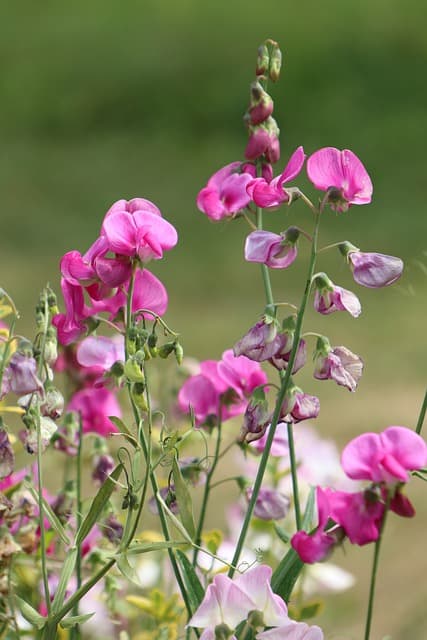
Sweet peas are cherished for their fragrance and delightful blooms, adding a romantic touch to any garden. Their nectar-rich flowers, often in a spectrum of colors, attract bees looking for a hearty meal. Sweet peas are climbers, often growing on trellises or fences, which provides vertical interest and creates a haven for pollinators to explore. They thrive in cooler months, often blooming profusely in spring before the heat sets in, making them an essential early food source for bees. Planting sweet peas not only delights gardeners but also supports the blossoming bee community by presenting them with easy access to nourishment.
Heliotrope (Heliotropium arborescens)
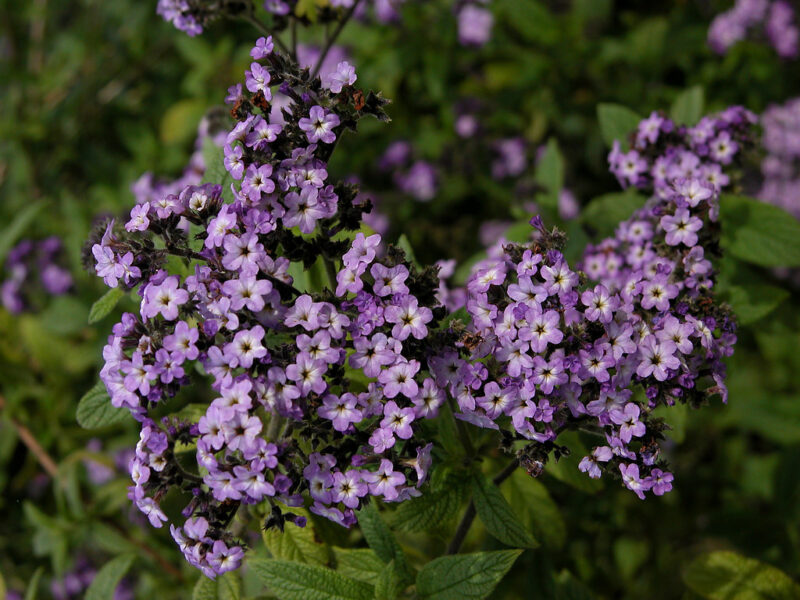
Heliotrope is prized not only for its captivating fragrance but also as a bee-attracting annual. The clustered blooms create a rich source of nectar, inviting bees to frequent the plant throughout the blooming season. The sweet scent of heliotrope acts as a lure in the garden, drawing softly buzzing pollinators to appreciate its blooms. This beautiful plant prefers sunny spots and well-drained soil, thriving in garden beds or containers. By incorporating heliotrope into your landscape, you enhance the sensory experience of your space while actively promoting healthy bee populations.


